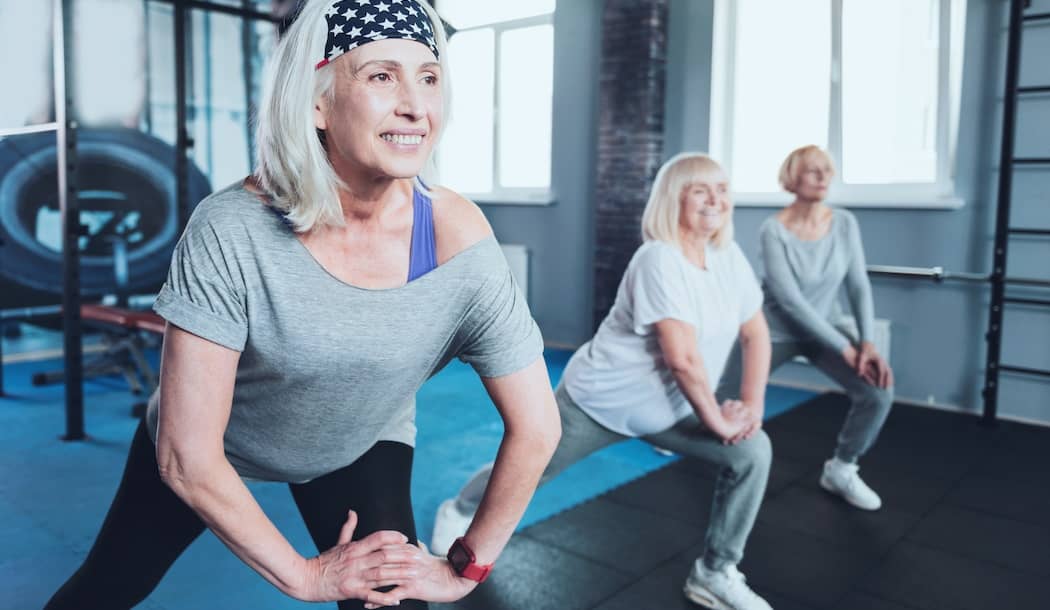
Not too long ago a healthcare professional friend of mine shared his top frustration with me.
“I bet if exercise was available in pill form,” he lamented, “it would be the most widely prescribed drug ever.”
I couldn’t agree more. While exercise has long been scientifically linked to countless physical and mental health benefits, it takes time and motivation, both of which can be in short supply these days.
But a new report from the American Cancer Society might give you the extra nudge you need to get exercising.
The new American Cancer Society report revealed that a whopping 46,000 cancer diagnoses could be prevented if Americans exercised more—specifically at least five hours per week.1 There are roughly 1.7 million new cancers diagnosed in the U.S. every year.
The latest exercise study shows that three percent of all cancer cases in American adults, aged 30 years and older during 2013 to 2016 could be attributed to physical inactivity. And women seemed to bear the lion’s share with 32,089 annual attributable cases compared to men with 14,277 cases.
While these numbers may seem like a drop in the bucket, researchers are careful to caution that this is the first study to estimate the number of specific cancers directly linked to physical inactivity.
Cancers directly influenced by inactivity
The data shows that 16.9 percent of stomach cancers, 11.9 percent of endometrial cancers, 11.0 percent of kidney cancers, 9.3 percent of colon cancers, 8.1 percent of esophageal cancers, 6.5 percent of female breast cancers, and 3.9 percent of urinary bladder cancers were associated with lack of exercise.
Why does exercise have such an impact on reducing the risk of cancer?
Experts point to a few different reasons. First, physical activity triggers positive physiological changes in the body, including weight loss. Second, exercise helps make the heart stronger, causing arteries to dilate more effectively, which in turn improves blood flow.
According to the National Foundation for Cancer Research, exercise also aids in lowering the levels of hormones such as estrogen and insulin.2 This is beneficial because increased levels of these hormones have been proven to correlate with cancer development and progression.
What’s more, exercise helps reduce inflammation and improves the immune system. This offers a one-two punch because it allows the body to properly function and wards off diseases such as cancer.
Mounting evidence behind tumor growth and spread
The National Cancer Association is careful to note that the link between exercise and cancer rates in this most recent study is observational because participants self-reported their physical activity.3
Still, it’s hard to dismiss the mounting evidence, in particular when it comes to tumor growth.
Another National Cancer Institute study found that people who exercised the most also had a lower risk of developing cancers of the bladder, esophagus, lung, rectum, and stomach.4
And yet another study found that cancer patients who are exercisers have better prognoses. It seems that exercise affects the production of several molecules that activate cancer-fighting immune cells, which in turn thwart cancer growth.5
Your exercise prescription
The Centers for Disease Control and Prevention recommends 50 minutes of moderate-intensity aerobic activities per week with two or more days focused on muscle-strengthening activities.6
Alternatively, your exercise ‘prescription’ could be 75 minutes of vigorous-intensity aerobic activities per week with two or more days of strength training. But don’t make it too complicated. The best exercise is the one you do!
The reality is that physical activity includes any movement that uses your skeletal muscles and through which you expend more energy than you would at rest. Sure, running, swimming, and biking are great, but don’t discount the physical benefits of household chores like vacuuming or even walking the dog.
Best regards,

Lee Euler,
Publisher
References:
- https://www.sciencedaily.com/releases/2021/10/211014102027.htm
- https://www.nfcr.org/blog/cancer-prevention-which-type-of-exercise-lowers-your-risk/
- https://www.cancer.gov/about-cancer/causes-prevention/risk/obesity/physical-activity-fact-sheet
- https://jamanetwork.com/journals/jamainternalmedicine/fullarticle/2521826
- https://www.sciencedaily.com/releases/2020/10/201026114229.htm
- https://www.cdc.gov/physicalactivity/basics/adults/index.htm